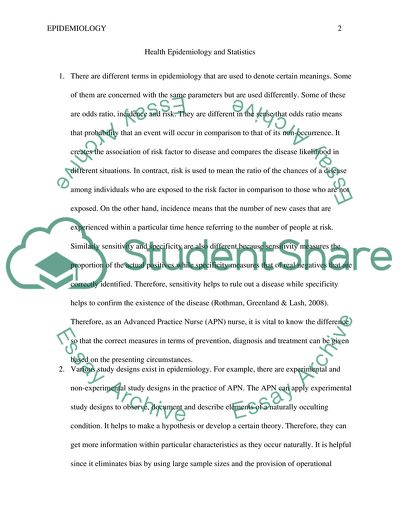Health epidemiology & statistics Essay Example | Topics and Well Written Essays - 500 words - 1. https://studentshare.org/medical-science/1845065-health-epidemiology-and-statistics
Health Epidemiology & Statistics Essay Example | Topics and Well Written Essays - 500 Words - 1. https://studentshare.org/medical-science/1845065-health-epidemiology-and-statistics.


